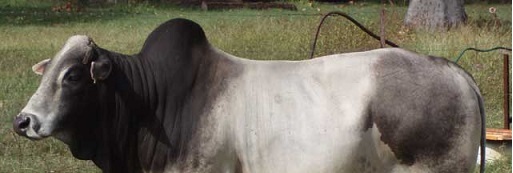NADUDANA (MINATURE ZEBU)
THE BREED
A BRIEF HISTORY
Nadudana is a Hindi word meaning small cattle. They are thought to have a stable gene line reaching back many centuries in the
Indian sub-continent and some claim this extends as far back as 3000BC. Formal records for many breeds of pure Zebus can trace
the breeds back into the 1600's. The word Zebu is derived from the Tibetan word 'ceba', which means 'hump' and the term refers generally
to humped cattle of the Bos indicus species. Nadudana cattle are known to be one of the oldest, rarest and truest breed of small cattle in the
world. They were kept and bred on temple grounds for their small size. The common ancestor of all bovines was called an aurochs.
These are the cattle displayed in the cave paintings of western Europe-humped cattle with lyre-shaped horns, small hindquarters and massive, deep chests. Aurochs are thought to have become extinct in the 1600s, although recent attempts to recreate the aurochs have resulted in cattle with a striking resemblance to the original.
Descendants of the aurochs were bison, yaks, and two types of cattle; Bos Taurus in Europe and Bos Indicus in South-eastern Asia.
Bos Taurus are the cows with which many of us are familiar with-large, heavy beef and dairy cattle. Bos Indicus have humps, ''twitchy'' skin,
and thrive in hot, humid conditions. Humped cattle are generically known as Zebu. The term ''Zebu'' means 'the hump of the camel'' and was
adopted in 1752 at the Paris agricultural fair to describe all breeds of Bos indicus. The hump was an artificially developed characteristic
bred into the cattle during the early periods of domestication and inbreeding. It came about by a process of selection by farmers in the
Middle East The first domesticated cattle were known to have existed nearly 10,000 years ago in the Middle East and were not humped.
The selection process for a larger hump was aimed at obtaining the best cattle as beast of burden e.g. for pulling ploughs and carts.
The hump is a well developed muscle, well marbled with fat but it has no bone. It is cooked as a delicacy in South American countries.
There are about 40 known breeds or varieties of Zebu developed in South Asia including India, Sri Lanka, and Indonesia.
The African continent has another 35 Zebu breeds. In southern India, which is one of the principal cattle-raising districts of all India,
there exists cattle known as the “Nadudana'' or small cattle. This name has been adopted for the breed in Australia, but they are known
as miniature zebu in other countries, including in the USA where they are derived from few of cattle that were imported in the 1920s and
held in zoological gardens. After many years of trying, by various people, the first Nadudanas were imported into Australia in January 1995,
with further imports of mature bulls in July 1995. There has only been 16 pure Nadudanas imported in Australia.
The first purebred calf in Australia was born in August 1996 and the first purebred embryo calf was born in September 1996.
"Frosty" is believed to be the first successful embryo transfer Nadudana in the world.

